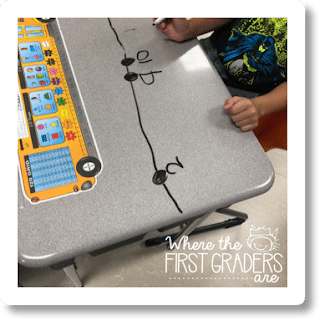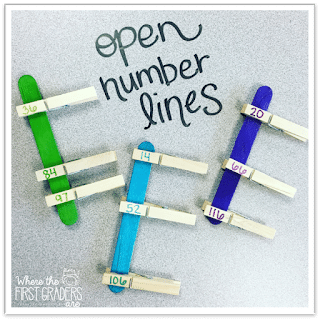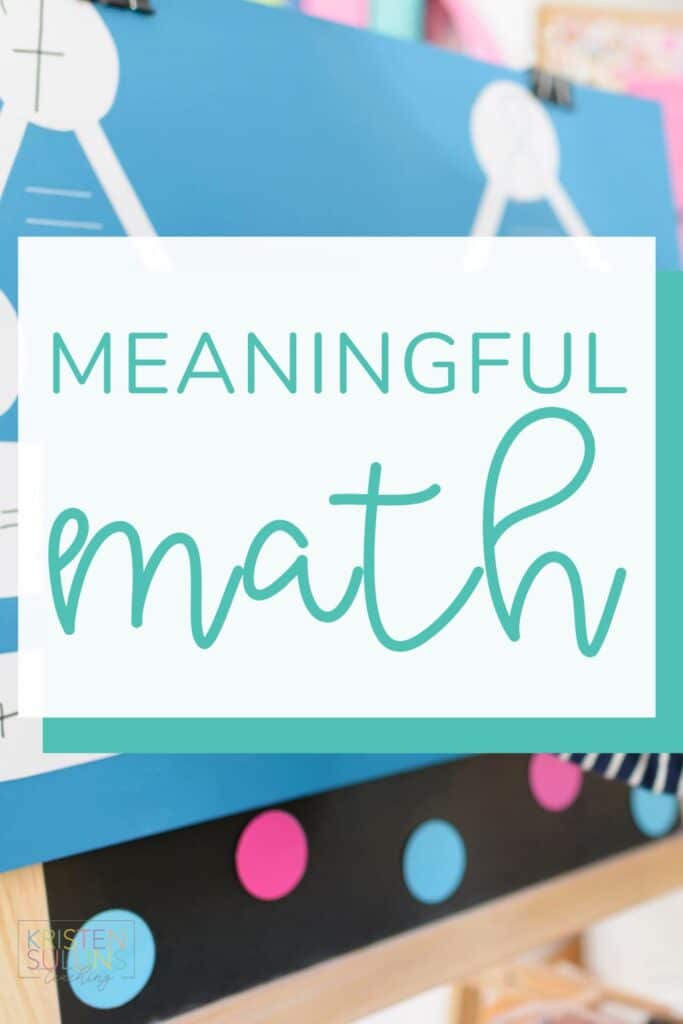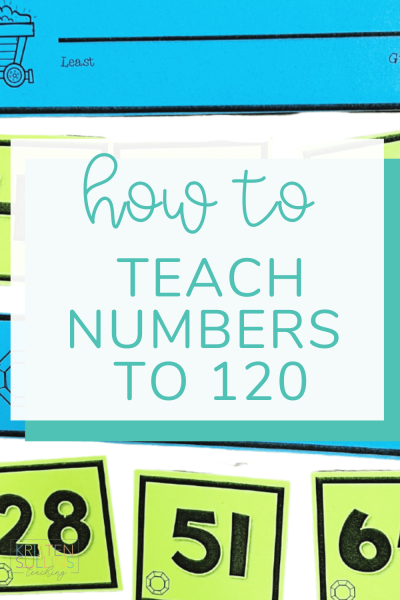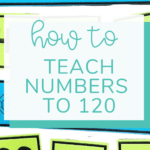Building number sense is one of the most important foundational skills in first grade!
First grade serves as a critical milestone where students begin to explore and make sense of the world of numbers.
In this blog post, we will delve into the importance of understanding numbers for first graders and provide practical strategies to support their learning.
We will talk about why number sense is important and discuss the three main number sense topics in first grade: place value, comparing numbers, ordering numbers on open number lines.
I’ll also go over the order in which I teach these skills and my favorite number sense activities to use for whole group lessons, small group time and stations!
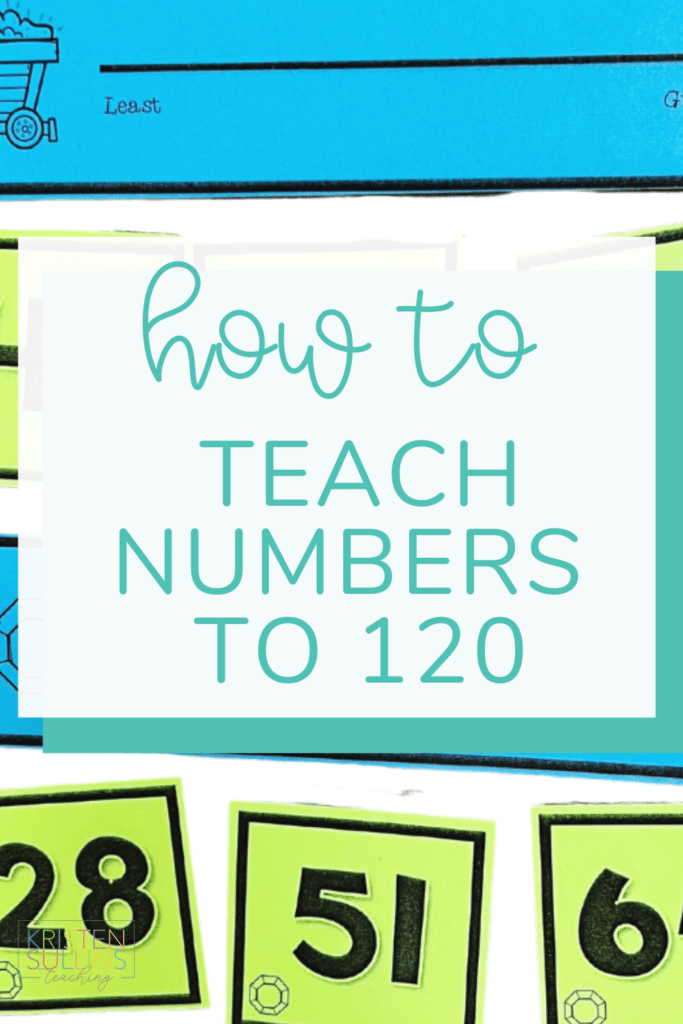
Why are Numbers important in First Grade?
There are three essential building blocks of number sense in first grade: place value, comparing numbers and ordering numbers on an open number line.
Place Value
Place value refers to the value of a digit in a number based on its position. Understanding place value is crucial for students as it lays the foundation for their mathematical journey and fosters a deeper comprehension of numbers and operations.
Place value helps students develop a strong number sense by enabling them to grasp the relationship between digits and their significance in different places within a number. By understanding that the position of a digit determines its value, students can make sense of the magnitude of numbers, compare and order them, and identify patterns and relationships.
Comparing Numbers
First graders should learn to compare numbers to develop a sense of magnitude. Activities involving number lines, manipulatives, or interactive games allow students to practice comparing numbers using the concepts of greater than, less than, and equal to. This skill is important for later mathematical concepts and problem-solving.
First grade is when students should be able to correctly use mathematical symbols to show greater than, less than and equal to. A skill that seems more difficult for most first grade students is being able to read the problem afterwards, such as “59 is greater than 43” out loud. Encourage them to use these words in mathematical discussions to describe the relationships between numbers.
Ordering Numbers
Ordering numbers on an open number line is one of the more difficult number sense concepts. It’s very similar to putting numbers in order from least to greatest, however, students should be able to place the numbers in the appropriate places on an “open number line”.
What is an open number line? It’s simply a number line without any premarked numbers.
In first grade, understanding numbers lays the foundation for future mathematical success. By providing opportunities for counting, exploring place value, comparing and ordering numbers, and engaging in problem-solving activities, educators can support first graders' growth in number sense. Remember to foster a positive and supportive learning environment that encourages students to explore, make connections, and develop a love for mathematics. With a strong grasp of numbers, first graders can confidently move forward on their mathematical journey.
How to Teach Numbers to 120 in First Grade
Just like all skills in first grade, you shouldn’t just jump straight into working with numbers all the way up to 120. It’s best to start small and gradually work with bigger numbers in steps.
I like to work in the following progressions:
Numbers to 20 (a review of Kindergarten)
Numbers to 50
Numbers to 99
Numbers to 120
A very important side note: for students who do not have a firm grasp of numbers to 20, I continue to expose them to the larger number groups during whole group lessons, but we continue to work with smaller numbers in our small group until they are ready to move on.
In the same way, for students who are ready for more of a challenge, you can move them on to bigger number groups when you work with them during small group time (chances are, they are probably ready for it and will enjoy the challenge!).
Place Value for First Grade
When it comes to teaching place value in first grade, manipulatives are your best friend! Base-ten blocks, including units (ones), rods (tens), flats (hundreds), and cubes (thousands), help students grasp place value concepts. They enable students to physically build and decompose numbers, understand regrouping and carrying, and perform addition and subtraction with regrouping.
After manipulatives, I love matching cards that students can use in a small group setting or station! Having matching cards mimics having a word bank on a worksheet. Students must look at the place value card and determine the number it represents. Then students match the place value card to a number.
If used in a small group, you can show the students one card (either place value or number) and have students draw what the matching card should look like by drawing the place value or writing the matching number! (Hint: this strategy works great for station work as well)
Comparing Numbers in First Grade
The first step in comparing numbers is to ensure students are familiar with the comparison symbols: greater than (>), less than (<), and equal to (=). Explain that these symbols represent the relationships between numbers.
It is a very common first grade practice to teach students to view the greater than and less than symbols as alligators mouths (Hint: it even helps to draw teeth on the symbols the first few times you practice this).
This idea is that the alligator mouth opens up to the larger number. I often tell my kids things like “Would the alligator rather eat 28 cookies or 13 cookies?… Of course, he would rather eat 28 cookies”. Again, the key is to help the students understand how to use the symbols, but they also need to be proficient in READING the symbols out loud as “28 is greater than 13”, etc.
For students who need more support, it helps to have them build out the two numbers they are comparing using place value blocks. This will help them visually see which number is larger.
For students who need more of a challenge, I love to use place value mats. In place value mats, students have to choose the numbers that will fit correctly on the map. For example, if using a “greater than” map, students have to choose a number that is larger to put on the left side and a smaller number to put on the right. Make sure students read the mat out loud “28 is greater than 13” to make sure it makes sense!
As students progress, encourage them to compare numbers mentally. This develops their ability to quickly analyze and compare quantities, which is beneficial in various mathematical situations.
Ordering Numbers on Open Number Lines in First Grade
One of my favorite ways to teach students how to build open number lines is by having students draw on their desk (or a whiteboard) with a dry erase marker.
I first have them draw the straight line, then we mark where we “think” the numbers should go by marking dots on the number line.
This strategy allows me to walk around and easily help students adjust (or remark) their dots if needed!
Another great station idea that I love to use is clothespins and popsicle sticks. You can read more about this station in detail HERE.
But here’s the short version: write three numbers on three different clothespins. Students must pin the clothespin to the popsicle stick in order from greatest to least. You can also write the answers on the back of the popsicle stick as a self-checking feature!
Station Activities for Numbers to 120
This bundle includes ALL of the math stations you need to help your students master building, comparing and ordering numbers from 1-120! Students must order numbers on an open number line, identify place value and determine greater than, less than, or equal to using comparative symbols.
This resource can be used to:
-whole group review of numbers to 120
-application in small group instruction
-engagement in a hands-on math center





